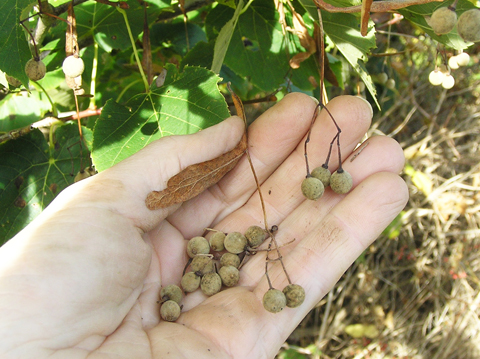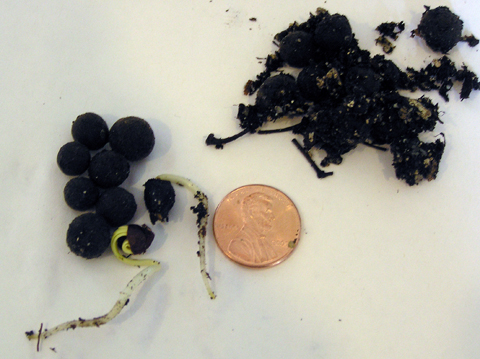 |
| Home | Ordering By Mail | Purchase Manual: Using Native Plants in Urban Landscapes |
|
|||||
Species Name: Tilia americana
Common Name: Basswood, American linden
Zone: 4 to 9
Distribution: southern Maine to Michigan in the north, south to Florida and Texas
Seed collection: Begin collecting seed in early September. Seed changes color only slightly from grayish green to light brown. Early harvest of seed can increase germination percentages the first spring. Seed often develops a deep dormancy if allowed to remain on the tree. Strip seed from the branches or shake seed from the tree onto a sheet. Remove wings and petioles from the seeds by rubbing over a screen to reduce bulk and make it easier to handle the seed.
Seed handling: The embryo is enclosed by a hard pericarp surrounded by a thin impermeable seed coat. Seed cleaning is recommended to improve germination as the seed coat is thought to contain a chemical inhibitor. Remove the seed coat by processing in a food processor for up to a minute. Begin cold/moist stratification after seed is cleaned. A percentage of seed will be empty due to unfertilized embryos. Check percentage of sound seed by opening a representative sample of about 20 seeds and counting the number of embryos. Seed can be store under cold moist conditions for two to three years without loss of viability.
Germination requirements: Basswood germination is very unpredictable. It is rare to get uniform germination. The majority of seed will require at least two years to germinate, but seed often germinates up to three or more years after collecting. Stratified seed can be kept in plastic bags until it germinates, pick out individual seeds as they germinate or sow all seed in prepared seed beds or plant seed in native soil.
Ecology: Basswood is a fast growing forest tree species. Its wood is lightweight, white in color and is easily worked and carved. It grows best on deep, fertile well-drained soils. It prefers limestone soils with pH ranging from slightly acid to pH 8.0. It is moderately tolerant to intolerant of shade. Common tree associates are sugar maple, black cherry, white ash and beech. It colonizes old fields to young woodland and forest openings in mature woodlands, where it can grow rapidly due to sunlight exposure. Basswood develops a multi-stemmed habit when grown in the open in full sun. Basswood when growing in moderate shade reaches for the sun and its lower branches, deprived of sunlight, die and self prune leaving a tall straight clear trunk. Basswood has a tendency to produce suckers from the root system especially when the main trunk is killed. Encourage basswood by sowing lots of seed in suitable habitat. Basswood is a preferred deer food and high deer populations can inhibit seedling reproduction. Protect seedlings from browsing until seedlings are above deer browse height.

Basswood seed ready for harvest.

Basswood seed beginning germination during stratification.
this page posted November 1, 2011